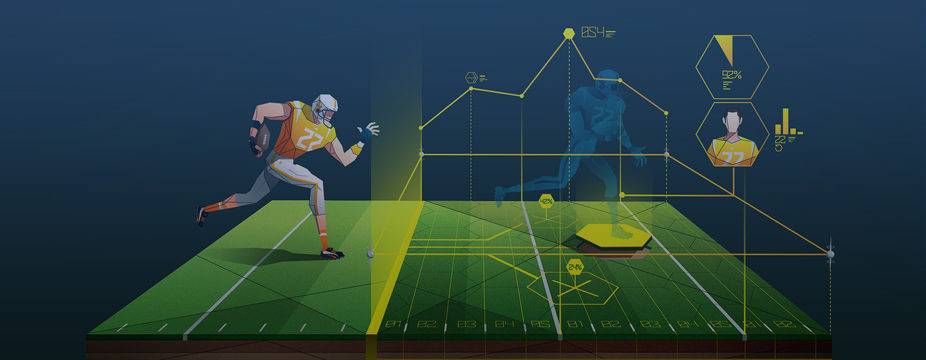Let's Talk About Analytics

If you’re a little more than a casual sports fan, or if you’re familiar with the movie Moneyball, then you probably have some familiarity with sports analytics. Sports analytics can be broadly defined as pursuing improvement in athletic performance through the analysis of data (Baumer et al., 2023). For example, when playing against average or below-average three-point shooting teams in the NBA, McFarlane (2019) found that fouling when up three points and under nine seconds remaining in the game is a highly successful strategy for the team on defense. It results in a win percentage of over ninety percent. Another example in the NBA is the decline of the mid-range jump shot in favor of three-point shots and shots at the rim, both driven by analytics.
Historically, much of the discussion about sports analytics revolves around player-performance analysis in baseball (Masteralexis et al., 2019). Bill James, who is considered the father of sabermetrics, began publishing his Baseball Abstract in 1977. This was an advanced statistical breakdown of MLB box scores and it set the foundation for how analytics are used in sports today. According to the Society for American Baseball Research (2022), James has invented a “plethora of performance measures such as Runs Created, Major League Equivalency for minor league players and Win Shares” and “the value of his approach and predictions led to his position as a Senior Advisor on Baseball Operations for the Boston Red Sox from 2002 to 2019, a period in which the franchise won four World Series championships” (para. 1).
Today, analytics are utilized in most major professional sports and have even been adopted by college teams. However, the use of analytics in sports is not restricted to just on-field performance. Teams and leagues are also investing heavily into business analytics which is applied to strategic initiatives such as ticket pricing, customer relationship management, social media marketing, and facility financing (Masteralexis et al., 2019). In fact, the sports analytics market is projected to grow from $2,5 billion to $8.4 billion by 2026, with a Compound Annual Growth Rate (CAGR) of 27.3% (Disozza, 2023). This is driven by the demand of teams to increase their bottom-line and performance on the field, as well as the growth of online sports gambling and fantasy games.
Business analytics can assist teams in making the best decisions in several ways. Marketing teams can use customer data to find their target market and allocate their advertising dollars accordingly. Additionally, using new technology, such as smart phone apps, allows teams to track where their fans come from, monitor concession and restroom lines, and can act as a virtual concierge such as the “Ask Arthur” app available at Mercedes-Benz Stadium. Financial managers in the sport industry use analytics daily, whether they are carefully structuring player contracts in accordance with their league’s salary cap policy, calculating the projected cost of new stadium enhancements, or assessing the risk of future investment options for their organization (Masteralexis et al., 2019). Finally, since ticket prices are based on supply and demand, analytics can be used to determine the price of certain seats for particular games.
For people interested in pursuing a career in sports analytics, having a degree in mathematics, statistics, computer science, data science, or a related field is recommended. Also, knowledge of statistical software and programming language such as Python, Tableau, and SQL is typically required. The role of the analytics expert consists of the ability to do the following, according to Masteralexis et al., (2019):
- Ask the right questions that get at the problem, or objective, the organization wants solved.
- Collect the correct data—clean, complete, and representative.
- Understand statistics sufficiently to model the data properly.
- Interpret the data, sorting out what is likely meaningful from what is not.
- Communicate findings in a way that a given audience can understand and act on. (p. 437)
References
Baumer, B. S., Matthews, G. J., & Nguyen, Q. (2023). Big ideas in sports analytics and statistical tools for their investigation. Wiley Interdisciplinary Reviews: Computational Statistics, e1612.
Disozza, B. (2023, June 8). Sports analytics market future scope and growth demand by 2030. LinkedIn. https://www.linkedin.com/pulse/sports-analytics-market-future-scope-growth-demand-2030-beli-disozza/.
Masteralexis, L. P., Barr, C. A., & Hums, M. A. (2019). Principles & Practice of Sport Management (6th ed.). Jones & Bartlett Learning.
McFarlane, P. (2019). Evaluating NBA end-of-game decision-making. Journal of Sports Analytics, 5(1), 17-22.
Society for American Baseball Research. (2022, June 14). Bill James. https://sabr.org/awards/winner/bill-james/.
Brandon Podgorski is an Associate Professor of Sport Management at Trine University and the Director of the Trine Center for Sports Studies.